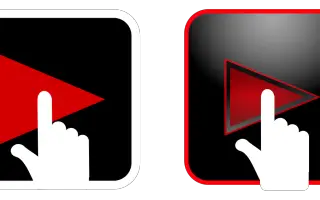Are you ready to take your Pinterest game to the next level?
Look no further than ChatGPT, your trusty AI companion, to help you unlock the full potential of this visual discovery platform.
Whether you’re a seasoned Pinterest pro or just getting started, these 10 tips will help you harness the power of ChatGPT to boost your presence, engage your audience, and drive more traffic to your website.
So, grab your virtual notepad, and let’s dive into the world of Pinterest with ChatGPT!
1. Leverage ChatGPT for Pin Descriptions.
Leveraging ChatGPT for Pin Descriptions is a powerful way to enhance the visibility and engagement of your pins on Pinterest. Pin descriptions play a crucial role in helping Pinterest users discover your content, understand what it’s about, and decide whether to click on it.
Here’s a more detailed breakdown of how to make the most of ChatGPT for crafting effective pin descriptions:
Why Pin Descriptions Matter.
- SEO and Discoverability: Pinterest is essentially a search engine for visual content. When users search for specific topics or keywords, Pinterest uses pin descriptions, among other factors, to determine which pins to display. By optimizing your pin descriptions with relevant keywords, you increase the chances of your pins showing up in search results.
- Engagement: A well-crafted pin description can pique the curiosity of users and encourage them to click on your pin. It provides context and entices users to explore your content further.
- Branding: Pin descriptions are an opportunity to convey your brand’s voice and personality. They help in building a consistent brand image and attracting users who resonate with your messaging.
How to Leverage ChatGPT for Pin Descriptions.
- Keyword Research: Start by researching relevant keywords for your pins. These are the terms and phrases that users are likely to search for on Pinterest. ChatGPT can help you brainstorm a list of keywords related to your content. Make sure to include both broad and specific keywords.
- Crafting Descriptions: Once you have your list of keywords, use ChatGPT to generate pin descriptions that incorporate these keywords naturally. The descriptions should be concise but informative, providing a clear idea of what the pin is about.
Example: If your pin is about a vegan pasta recipe, ChatGPT can help you create a description like, “Delicious and healthy vegan pasta recipe – perfect for a quick weeknight dinner! 🌱 #VeganRecipes #HealthyEating.”
- Call to Action (CTA): Include a compelling call to action in your pin description to encourage user interaction. Ask users to save the pin, try the recipe, or click through to your website for more information. Example: “Save this recipe for later or click to see the full instructions on our blog!
- Hashtags: Hashtags can increase the discoverability of your pins. ChatGPT can suggest relevant hashtags to include in your pin descriptions. Be sure to use popular and niche-specific hashtags to reach a broader audience.
Example: “#EasyDinnerIdeas #PlantBasedCooking #VeganFoodie”
- Emoji Usage: Emojis can add a visually appealing and expressive element to your pin descriptions. ChatGPT can recommend emojis that complement your pin’s theme and message. However, use them sparingly and ensure they align with your brand’s tone.
Example: “This smoothie bowl is a tropical paradise 🏝️🍍 – a healthy way to start your day! #BreakfastGoals”
A Few Tips and Best Practices.
- Be specific and descriptive in your pin descriptions.
- Use a consistent style and tone across your pins to reinforce your brand identity.
- Test different pin descriptions to see which ones perform best and adjust your strategy accordingly.
- Avoid clickbait or misleading descriptions; honesty is key to building trust with your audience.
Incorporating ChatGPT into your pin description creation process can save you time and help you generate engaging and SEO-friendly descriptions that attract more Pinterest users to your content. Remember, Pinterest is all about inspiration, so use ChatGPT to spark the creativity that drives Pinners to explore and engage with your pins.
2. Generate Pin Titles That Pop.
Generating Pin Titles That Pop is essential for capturing the attention of Pinterest users and encouraging them to click on your pins.
Pinterest is a visual platform, and catchy titles provide the necessary context and intrigue to make users want to learn more.
Why Pin Titles Matter.
- First Impression: A pin’s title is often the first thing users see when scrolling through their Pinterest feed. A compelling title can make your pin stand out in the sea of images and inspire users to take a closer look.
- Context: Pin titles provide context and tell users what to expect when they click on the pin. A well-crafted title sets the right expectations and increases the likelihood of user engagement.
- SEO Benefits: Just like pin descriptions, pin titles play a role in Pinterest’s search algorithm. Using relevant keywords in your titles can help your pins appear in search results.
How to Generate Pin Titles That Pop with ChatGPT.
- Understand Your Content: Before creating pin titles, ensure you have a clear understanding of the content you’re promoting. Whether it’s a blog post, a product, a recipe, or a DIY project, knowing your content well is crucial for generating relevant titles.
- Brainstorm Keywords: Use ChatGPT to brainstorm keywords related to your content. These keywords should be both relevant to your niche and popular among Pinterest users.
Example: If you’re promoting a blog post about home organization tips, relevant keywords could include “home organization,” “decluttering,” and “tidying up.”
- Get Creative: ChatGPT can assist in generating creative and eye-catching phrases that incorporate your keywords. Consider using action verbs, adjectives, and power words to make your titles more compelling.
Example: Instead of a generic title like “Home Organization Tips,” you could generate a more enticing title like “Transform Your Space with These Brilliant Home Organization Hacks!”
- Highlight Benefits: Pin titles that emphasize the benefits or solutions your content provides can be particularly effective. Users are more likely to engage with content that promises to solve a problem or improve their lives in some way.
Example: “Simplify Your Life with These Time-Saving Home Organization Ideas!”
- Ask Questions: Asking questions in pin titles can engage users and encourage them to click to find the answers. Make sure the questions are intriguing and relevant to your content.
Example: “Struggling to Keep Your Home Tidy? Discover the Secrets to Effortless Organization!”
- A/B Testing: To determine which pin titles perform best, consider running A/B tests. Create multiple pins for the same content with different titles, and monitor their performance over time. This data-driven approach can help you refine your title generation strategy.
Additional Tips and Best Practices.
- Keep titles concise: Pinterest recommends keeping titles to around 100 characters or less to ensure they display correctly on both desktop and mobile devices.
- Use title capitalization: Capitalize the first letter of each word in your title for a professional and consistent appearance.
- Avoid clickbait: While it’s important to create compelling titles, avoid exaggeration or misleading language. Users should find the content relevant to the title when they click through.
- Maintain brand consistency: If you have a specific style or tone for your brand, ensure that it is reflected in your pin titles.
3. Optimize Your Pinterest Profile.
Your Pinterest profile serves as your digital calling card. Use ChatGPT to craft a captivating and informative bio. Highlight your niche, interests, and expertise to attract followers who share your passion. Don’t forget to include a link to your website or blog.
Example Bio: “Passionate foodie 🍽 | Sharing delicious recipes, cooking tips, and food photography inspiration | Check out my blog for more tasty treats! 📌”
4. Pin Consistently.
Consistency is key on Pinterest. Use ChatGPT to create a content calendar and generate pin ideas to maintain a regular posting schedule. This keeps your audience engaged and signals to Pinterest’s algorithm that you’re an active user.
5. Create Engaging Pinterest Boards.
ChatGPT can help you brainstorm ideas for Pinterest boards that resonate with your audience. Organize your pins into relevant boards, and give each one an attention-grabbing title. This helps users find content that interests them and keeps them browsing.
Example Board Title: “Sustainable Living Hacks 🌿”
6. Collaborate with ChatGPT.
Two heads are better than one, right? Collaborate with ChatGPT to brainstorm collaboration ideas, partnerships, and cross-promotions with other Pinners or influencers in your niche. It can even help draft outreach messages to make the collaboration process smooth.
7. Stay on Trend.
Pinterest is a platform where trends can quickly gain momentum. ChatGPT can help you stay ahead of the curve by generating content ideas related to trending topics in your niche. Use these insights to create timely and relevant pins that catch the wave of interest.
8. Optimize for SEO.
Search engine optimization (SEO) isn’t just for websites; it matters on Pinterest too. Use ChatGPT to generate SEO-friendly pin descriptions, board names, and even blog post titles that incorporate popular keywords in your niche.
9. Engage with Your Audience.
Engagement is key to building a loyal Pinterest following. ChatGPT can suggest responses to comments on your pins, helping you maintain an active and friendly presence. Responding to comments and engaging with your audience can also boost your pins’ visibility.
Example Response: “Thanks for trying out the recipe! 😊 Did you make any special tweaks to it? I’d love to hear how it turned out!”
10. Monitor Analytics and Adjust.
Lastly, regularly analyze your Pinterest analytics to understand what’s working and what’s not. ChatGPT can help you interpret these insights and suggest adjustments to your strategy. Experiment with different types of content, posting times, and pin designs based on the data you gather.
Conclusion.
ChatGPT is your secret weapon to supercharge your Pinterest presence. From crafting captivating pin descriptions to brainstorming collaboration ideas and staying on top of trends, this AI companion can revolutionize your Pinterest strategy.
So, go ahead and harness the power of ChatGPT to take your Pinterest game to new heights. Happy pinning! 📌✨
Now, it’s your turn. What’s your favourite way to use ChatGPT for Pinterest success?




